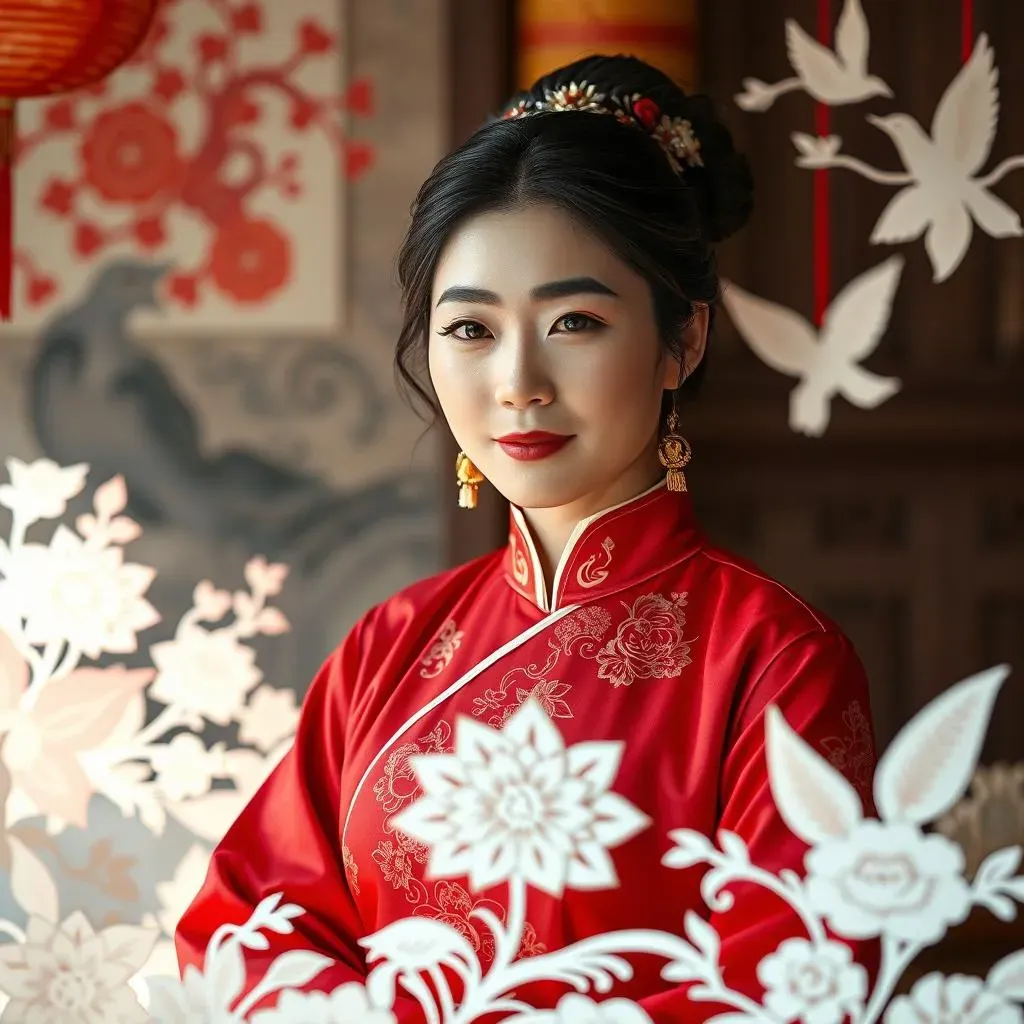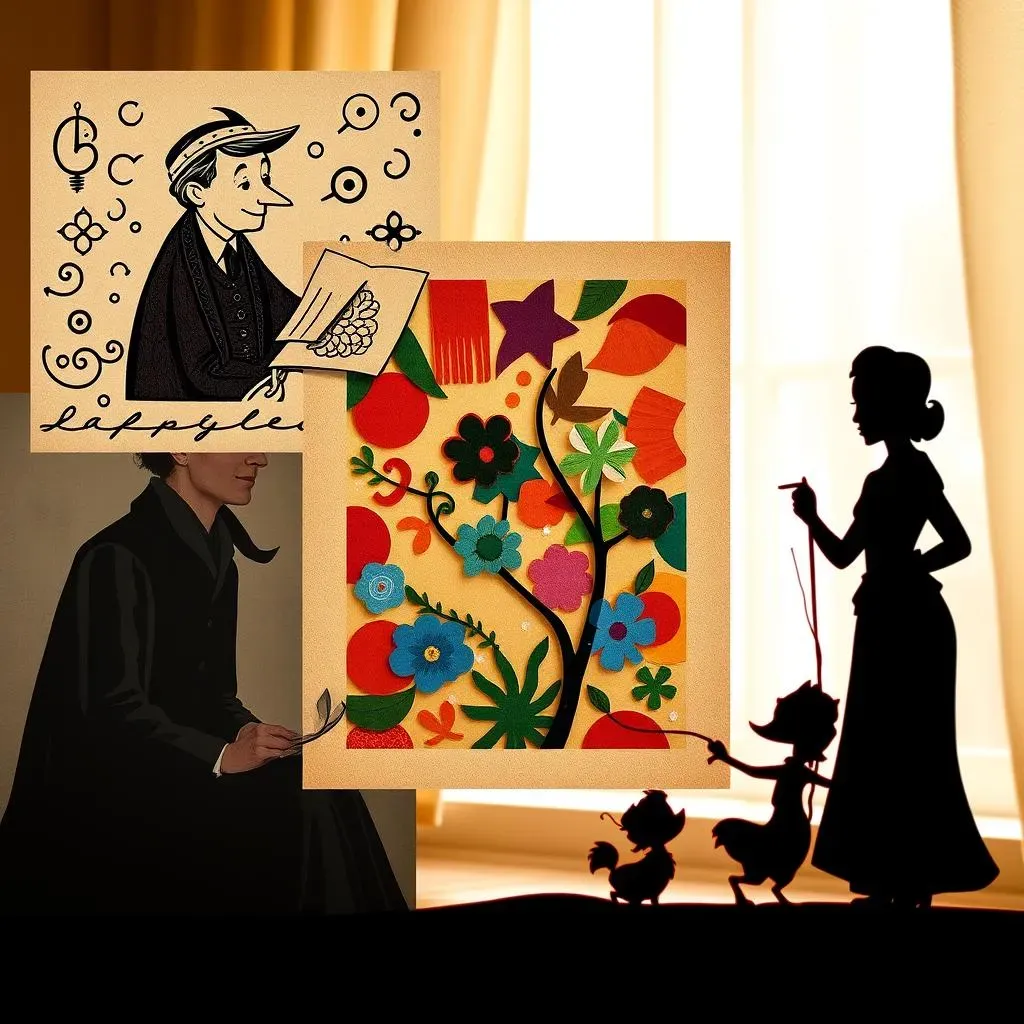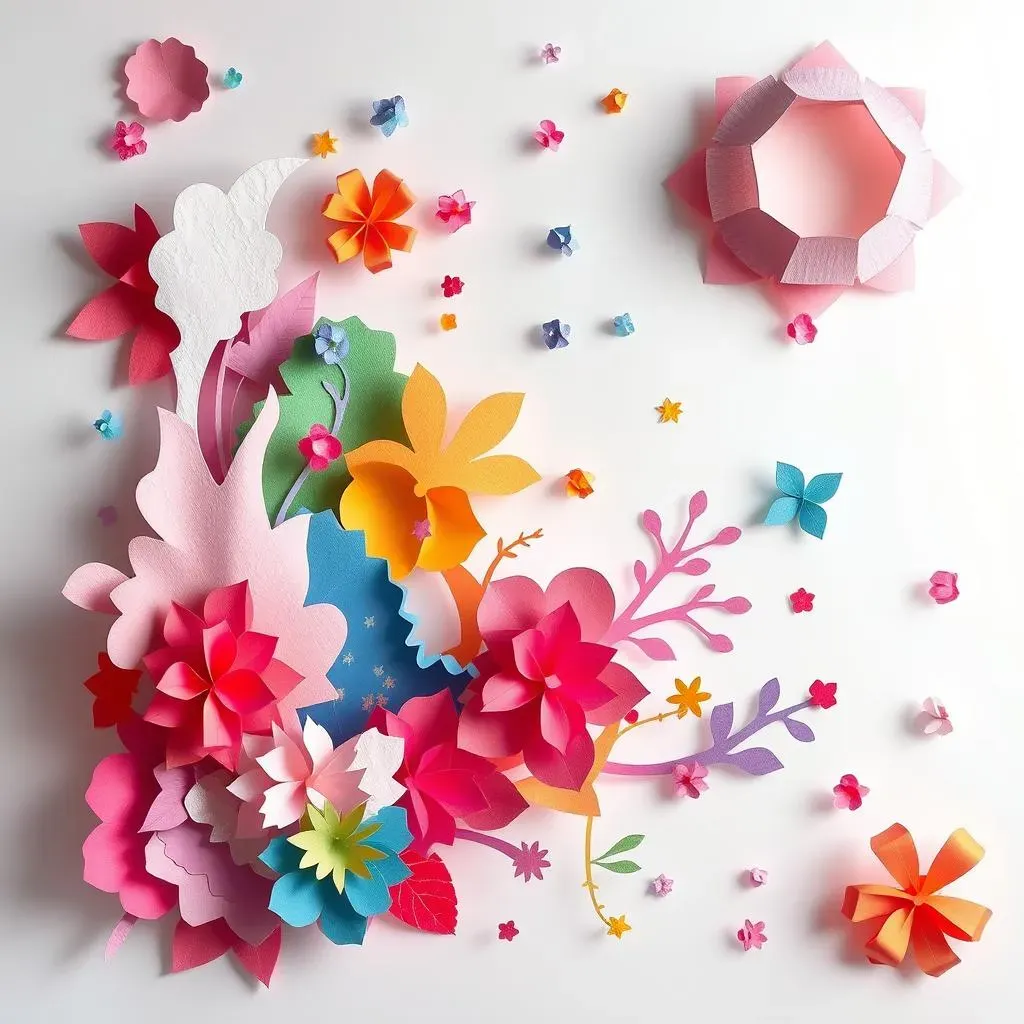Table of Contents
Ever wondered about the magic behind intricate designs cut from paper? It's more than just snipping with scissors; it's an art form with a rich history and diverse styles. This is papercutting, and it's known by many names around the world. In this article, we'll journey through the fascinating world of paper cutting, exploring its origins and evolution. We'll uncover different cultural styles and their unique names, from the ancient Chinese art of Jianzhi to the Swiss Scherenschnitte. We'll also look at some famous artists who have made their mark with this delicate art. By the end, you'll understand the various techniques, and the cultural significance behind each paper cutting name. So, grab your imaginary scissors, and let's cut our way into the captivating realm of paper art!
The Historical Roots of Paper Cutting and its Name
The Historical Roots of Paper Cutting and its Name
The Genesis of Papercutting
Let's rewind the clock way back, like, way back. Papercutting's story begins in China, around the 4th century AD, during the Jin Dynasty. Paper had been invented a bit earlier, but it took a while for people to realize they could do more with it than just write. Imagine someone, maybe bored during a long winter, started snipping away, creating patterns, and bam! Papercutting was born. It wasn't just random cuts; these early designs were often symmetrical and held symbolic meanings. They were used for decorations, religious rituals, and even as stencils. The Chinese name for this art, Jianzhi, literally translates to "paper cut," which is pretty on the nose, isn't it?
Jianzhi: More Than Just Paper
Jianzhi wasn't just a pastime; it became a deeply ingrained part of Chinese culture. It was a folk art, passed down through generations, with each region developing its unique style. Red paper was especially popular, symbolizing good fortune and happiness. You'd find Jianzhi adorning windows during festivals, weddings, and other special occasions, like New Year's celebrations. Think of it as their version of glitter, but way more meaningful. The patterns often depicted animals, flowers, and mythical creatures, each carrying its own symbolic weight. It's not just about cutting paper; it's about telling stories and preserving traditions.
Culture | Paper Cutting Name | Significance |
|---|---|---|
China | Jianzhi | Traditional folk art, often used for decoration and rituals. |
Germany | Scherenschnitte | "Scissor cuts," often featuring symmetrical designs. |
Japan | Kirigami | Involves cutting and folding paper to create designs. |
The Spread of Scissors and Paper
Papercutting didn't stay confined to China, of course. It hitched a ride along trade routes and slowly spread to other parts of the world. By the 16th century, it had made its way to Europe, where it became known as Scherenschnitte in German-speaking regions, which means "scissor cuts," another literal name. In Switzerland, it became a popular folk art, with intricate designs often depicting scenes of rural life. The techniques and styles varied from place to place, each culture putting its spin on this simple yet elegant art. It's like a global game of telephone, each version slightly different but all connected by the same basic idea: cutting designs from paper.
Global Styles of Paper Cutting: Exploring Different Names
Global Styles of Paper Cutting: Exploring Different Names
Okay, so paper cutting didn't just stop at China and Europe. It's like it went on a world tour, picking up new styles and names along the way. In Japan, they have Kirigami, which isn't just about cutting; it also involves folding the paper. It's like paper origami's cool cousin. They make these amazing geometric patterns and shapes, sometimes even 3D designs. Then, you have Papel Picado in Mexico, which is super colorful and festive. They use it to decorate for Day of the Dead and other celebrations. It’s not just about the cut, it is also about the vibrant color that brings the design to life. Each culture has its own way of doing things, its own name for the art, and it's just wild how something so simple can be so different all over the globe.
Let's not forget the Indonesian art of Wayang Kulit, where paper cutouts are used to create shadow puppets. These aren't just static images; they tell stories through light and shadow. In the Philippines, you might find Pabalat or Pastillas wrappers, intricately cut paper used to decorate sweets. Even in Sweden, they have their own version, often with delicate patterns influenced by nature. It's like each country took the basic idea of cutting paper and made it their own, like a remix of a classic song. The names and styles might be different, but the creativity and skill are universal.
- Kirigami (Japan): Combines cutting and folding for geometric designs.
- Papel Picado (Mexico): Colorful, festive paper cutouts for celebrations.
- Wayang Kulit (Indonesia): Paper cutouts used as shadow puppets.
- Pabalat/Pastillas (Philippines): Intricately cut paper for sweet wrappers.
- Swedish Paper Cutting: Delicate patterns often inspired by nature.
Notable Artists and Their Paper Cutting Names
Notable Artists and Their Paper Cutting Names
Hans Christian Andersen: The Storyteller with Scissors
You might know Hans Christian Andersen for his fairy tales, but did you know he was also a skilled paper cutter? Yeah, the guy who wrote "The Little Mermaid" and "The Ugly Duckling" also had a knack for snipping paper into beautiful designs. It's said that he'd often create these paper cuttings while telling his stories, almost like a visual accompaniment to his words. His designs were often intricate and whimsical, reflecting the same imaginative spirit found in his stories. It's like he was using paper as another way to bring his fantastic worlds to life.
Andersen's paper cuttings weren't just doodles; they were works of art that showed his creative mind. He'd give them as gifts to friends and family, which is kind of a cool personal touch, right? It’s like getting a signed first edition, but made of paper. His approach to paper cutting was a blend of storytelling and art, making him one of the early notable figures in the art form. He didn't necessarily have a special "paper cutting name" for his style, but his contribution is undeniable.
Henri Matisse: Cutting with Color
Henri Matisse, a name you probably know from the painting world, also got into paper cutting, but in a rather unique way. Late in his career, when illness made painting difficult, Matisse turned to "drawing with scissors," as he called it. He'd cut shapes from brightly colored paper, arranging them into vibrant collages. It’s almost like he was painting, but with paper and scissors instead of paint and a brush. His paper cutouts were bold, expressive, and full of life, showing that even with a different medium, his artistic vision remained strong.
Artist | Paper Cutting Style | Key Characteristics |
|---|---|---|
Hans Christian Andersen | Whimsical Storytelling | Intricate, imaginative designs reflecting his fairy tales. |
Henri Matisse | Bold Color Collages | Brightly colored paper cutouts, expressive and dynamic. |
Lotte Reiniger | Silhouette Animation | Detailed silhouettes used in stop-motion films. |
Matisse’s paper cutouts were a big deal. They were seen as a new direction in his work and a testament to his adaptability as an artist. He didn't just see paper as a flat surface; he saw it as a way to explore color, form, and composition. His paper cutting name, if you could call it that, was "drawing with scissors," which perfectly describes his approach. It’s a reminder that art can be found in unexpected places and that limitations can sometimes lead to innovation.
Lotte Reiniger: The Master of Silhouette Animation
Lotte Reiniger was a German film director and animator who used paper cutting to create magical stop-motion films. She was a pioneer in silhouette animation, crafting incredibly detailed characters and backgrounds from cut paper. Her most famous work, "The Adventures of Prince Achmed," is a masterpiece of silhouette animation, showing just how much you can achieve with paper, scissors, and a whole lot of patience. It's like she was bringing paper to life, giving it movement and emotion.
Reiniger's paper cuttings were incredibly detailed and precise. She had to be, since every tiny detail would show up on film. Her work was a testament to her skill and her dedication to the art of animation. While she didn't necessarily give her style a specific "paper cutting name," her contribution to the art form is undeniable. She showed the world that paper cutting wasn't just for decorations; it could be used to tell stories on the big screen. Her work continues to inspire animators and paper cutting enthusiasts alike.
Paper Cutting Names: Modern Interpretations and Techniques
Paper Cutting Names: Modern Interpretations and Techniques
New Forms, New Names
Okay, so we've talked about the old-school paper cutting, the classics, but what about now? The modern scene is where things get really interesting. Paper cutting has exploded into all sorts of new directions. We're seeing artists mix traditional techniques with modern tools, like laser cutters, to achieve insane levels of detail. It's like they're taking the old rules and remixing them with a modern beat. Some artists are even incorporating digital designs into their paper cutting, blurring the lines between the digital and the physical, and giving rise to new "paper cutting names" within these sub-genres. This isn't your grandma's paper doily; this is paper cutting on steroids.
And let's talk about the themes. While the old masters focused on folk art or silhouettes, modern paper cutting is tackling everything from social commentary to abstract designs. You'll see paper cut art used in graffiti, stencil art, and even 3D installations. It's like the art form has finally broken free from its traditional constraints and is exploring all kinds of new territory. The art world is taking notice, with paper cutting popping up in galleries and museums. It's a testament to how a simple act of cutting paper can evolve into something so complex and meaningful. The names may not be as established as 'Jianzhi' or 'Scherenschnitte' yet, but they're evolving just as fast as the art itself.
Tools and Techniques: Beyond Scissors
The tools are changing too. While scissors and craft knives are still the go-to for many, you've got artists using laser cutters for super intricate designs, or even combining paper with other materials like wood or metal. It's like they're pushing the boundaries of what's possible with paper, and each new method brings with it a new set of styles and, sometimes, new "paper cutting names" that describe the particular approach. The techniques are evolving too, with artists experimenting with layering, folding, and even using light to create stunning effects. It's no longer just about flat cutouts; it's about creating depth, texture, and dimension.
The possibilities are endless, and it’s exciting to see where it's headed. It's no longer a niche art form; it's a dynamic and evolving practice that's capturing the imagination of artists and viewers alike. The art of paper cutting, with all its various names and methods, is a testament to human creativity. Whether it's the ancient art of Jianzhi or the modern innovations, paper cutting continues to captivate and inspire. It's a beautiful reminder that even the simplest of materials can be transformed into something extraordinary.
Technique | Tools Used | Characteristics | Modern Paper Cutting Names |
|---|---|---|---|
Traditional Cutting | Scissors, Craft Knives | Intricate designs, often symmetrical or themed. | Hand-cut paper art |
Laser Cutting | Laser Cutter | Extremely precise, detailed designs. | Laser-cut paper art |
Mixed Media | Various Tools | Paper combined with other materials. | Paper sculpture, mixed media paper art |
The Enduring Allure of Paper Cutting Names
From ancient origins to modern interpretations, the art of paper cutting, with all its diverse names, continues to captivate. Each cut, each fold, tells a story of cultural heritage and artistic innovation. Whether it's called Jianzhi, Kirigami, or Scherenschnitte, the essence remains: transforming simple paper into intricate masterpieces. This art form, with its rich history and global presence, proves that beauty can be found in the most delicate of materials. The future of paper cutting is bright, with artists around the world continuing to explore new techniques and push the boundaries of this timeless craft. So, the next time you see a paper cut design, remember the history, the artistry, and the many names that make it such a unique and cherished art form.